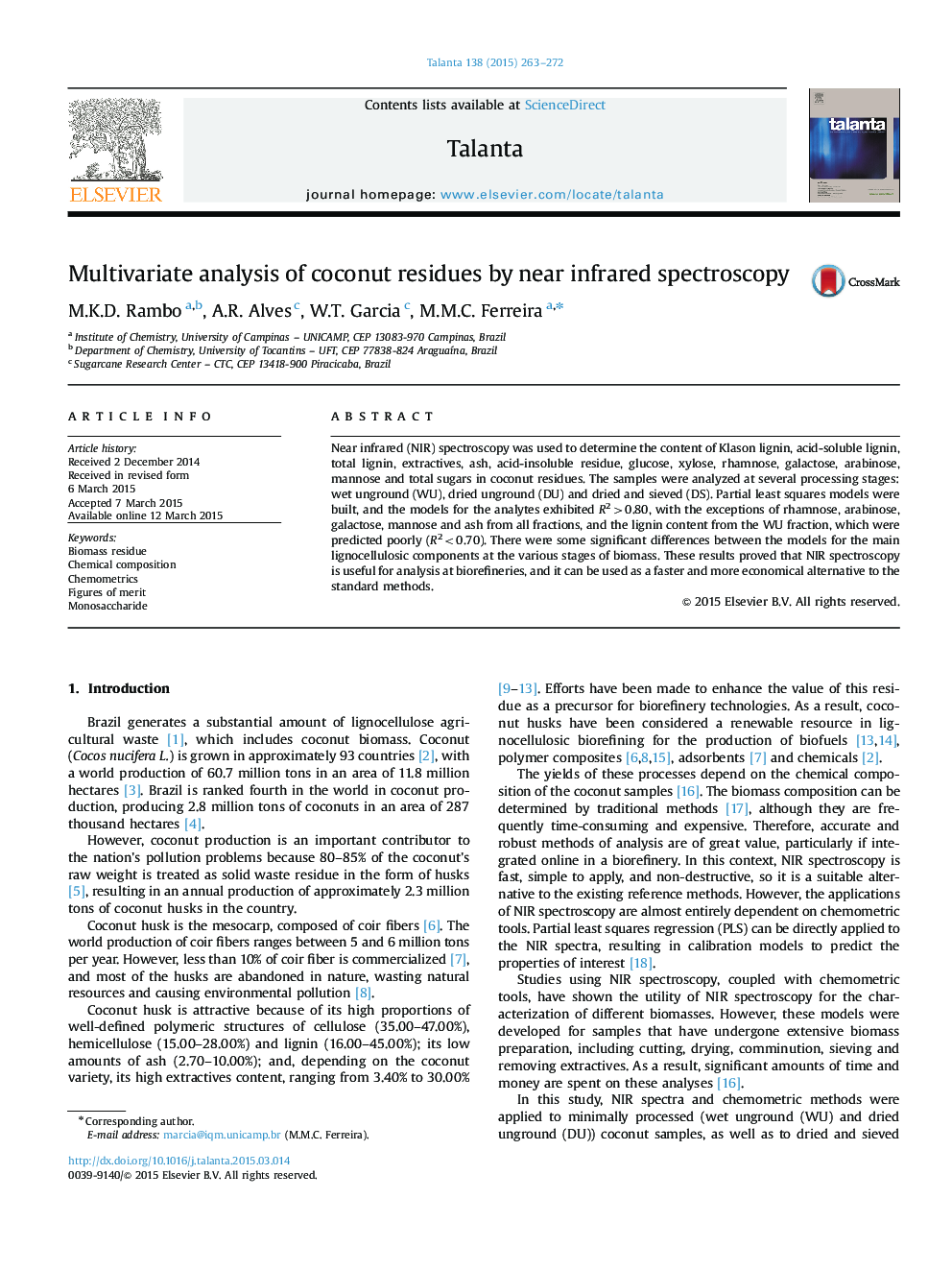| کد مقاله | کد نشریه | سال انتشار | مقاله انگلیسی | نسخه تمام متن |
|---|---|---|---|---|
| 1243359 | 1495797 | 2015 | 10 صفحه PDF | دانلود رایگان |
• Characterization of coconut residues.
• Physicochemical analysis of several processing stages.
• Potential use of NIRS and chemometrics for determining biomass composition.
• Biorefineries opportunities.
Near infrared (NIR) spectroscopy was used to determine the content of Klason lignin, acid-soluble lignin, total lignin, extractives, ash, acid-insoluble residue, glucose, xylose, rhamnose, galactose, arabinose, mannose and total sugars in coconut residues. The samples were analyzed at several processing stages: wet unground (WU), dried unground (DU) and dried and sieved (DS). Partial least squares models were built, and the models for the analytes exhibited R2>0.80, with the exceptions of rhamnose, arabinose, galactose, mannose and ash from all fractions, and the lignin content from the WU fraction, which were predicted poorly (R2<0.70). There were some significant differences between the models for the main lignocellulosic components at the various stages of biomass. These results proved that NIR spectroscopy is useful for analysis at biorefineries, and it can be used as a faster and more economical alternative to the standard methods.
Near Infrared Spectra for coconut samples and plot of reference versus predicted values from the calibration and external validation models for the total sugars.Figure optionsDownload as PowerPoint slide
Journal: Talanta - Volume 138, 1 June 2015, Pages 263–272
